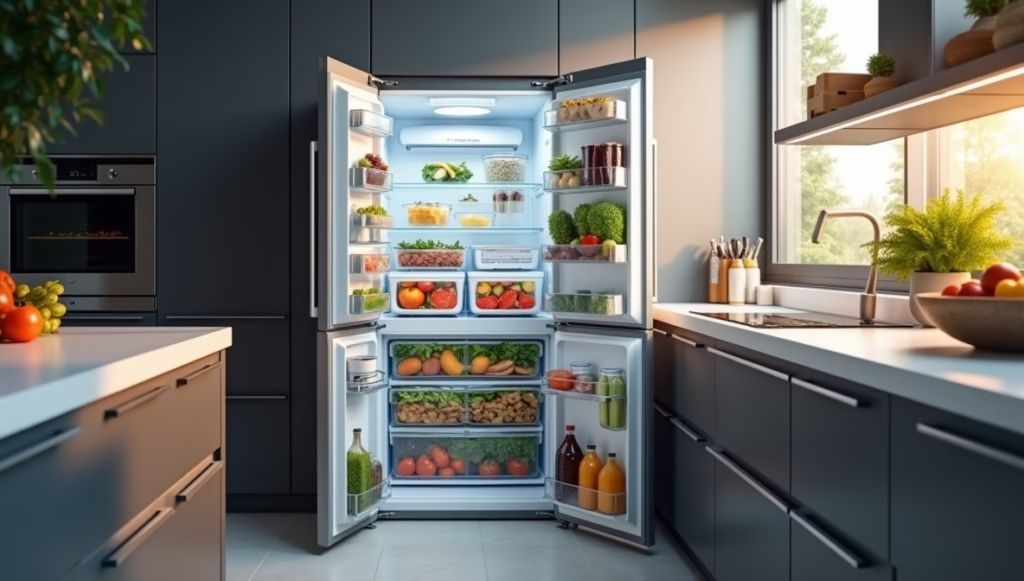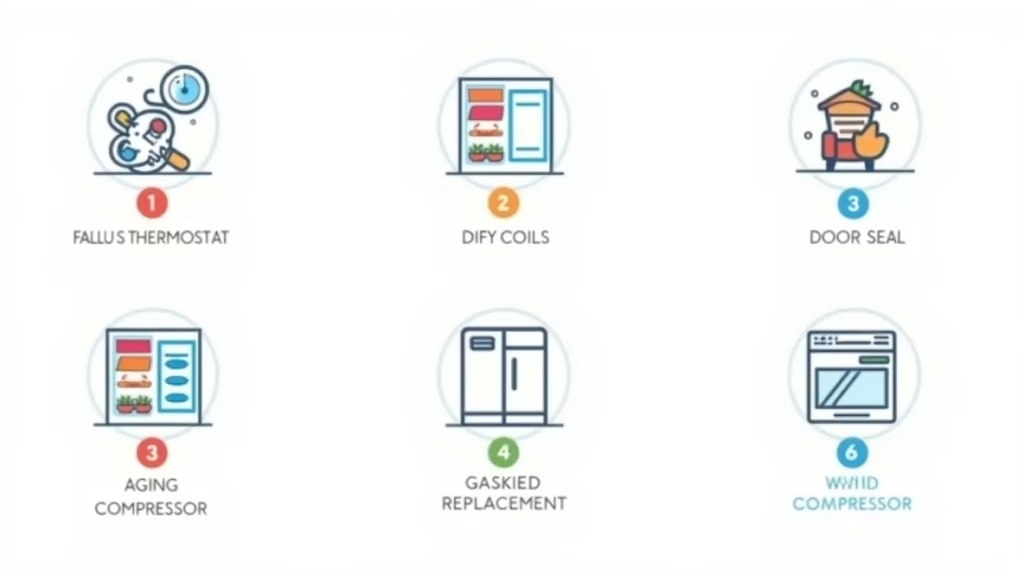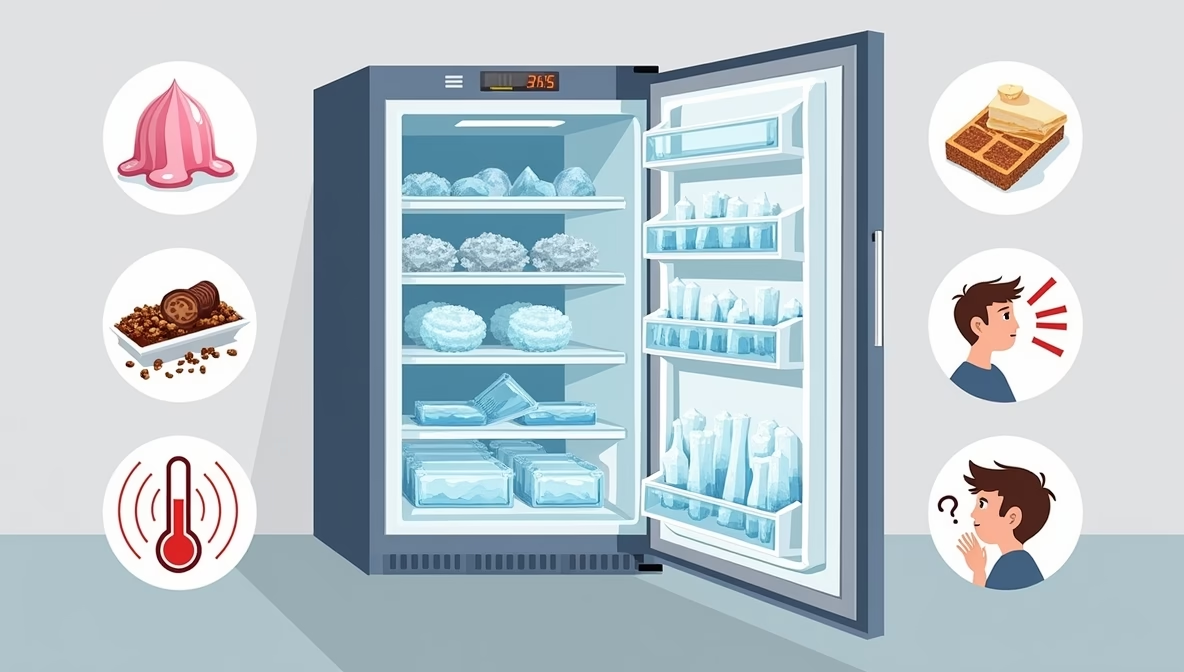Introduction: Why Freezer Temperature Matters

Your freezer is one of the hardest-working appliances in your home, just like your refrigerator, water heater, and even outdoor systems such as pool tiles or metal heaters. Keeping the correct freezer temperature ensures your food stays safe, fresh, and free from harmful bacteria. If the temperature is off, your freezer can struggle—similar to how hard water and laundry can create issues or how squirrel infestations disrupt your attic space.
Unfortunately, many homeowners don’t notice something’s wrong until food quality declines. But if you watch for the six warning signs, you can fix the problem before it worsens.
Ideal Freezer Temperature: What’s the Right Setting?
According to the U.S. Food and Drug Administration (FDA), your freezer should stay at 0°F (-18°C). This is the same precision you’d use when checking the pH of muriatic acid for pools or following a concrete curing temperature chart when pouring a slab in cold weather. Just like load wire and line wire must be connected properly in electrical work, your freezer temperature must be set right to avoid damage.
6 Warning Signs Your Freezer Temperature Isn’t Right
1. Food Isn’t Freezing Properly

If your ice cream is soft or your yellow tomato varieties spoil quickly, your freezer might not be cold enough. Think of it like trying to iron a linen shirt without enough heat—results won’t last.
2. Excessive Ice Crystals and Freezer Burn
Too many ice crystals are like frost buildup on drywall screws—annoying, damaging, and a sign of imbalance. Just as freezer burn ruins food quality, bleach and cockroaches don’t mix well—both show you need a cleaner system.
3. Strange Odors Coming from the Freezer
Unusual smells could mean food thawed and refroze, much like how toilet bubbles when you shower indicate plumbing problems.
4. Freezer Running Constantly or Making Loud Noises
A constantly running freezer is similar to an overloaded support joist or electrical line vs load issue—it’s being pushed beyond its limit.
5. Frost Buildup on the Freezer Walls
This is like noticing mold on subfloor vs underlayment—it tells you excess moisture has crept in. Often, this happens because the door gasket (seal) is worn, like when thermofoil cabinets start peeling.
6. Fluctuating Temperatures Inside the Freezer
Hot and cold spots in your freezer are just like uneven mowing lawn patterns or planting part sun part shade perennials—you won’t get consistent results without balance.
Common Causes of Incorrect Freezer Temperatures

- Thermostat Issues: Similar to using the wrong wiring diagram for a single pole light switch.
- Poor Door Seal: Much like a screened-in patio kit with a torn screen, it lets air in.
- Overloading: Comparable to cramming too many baskets for planting into one spot.
- Dirty Coils: Just like clogged pool tiles or garage floor epoxy cracks, maintenance is key.
- Aging Compressor: As with old angel hair plants or shrubs that are drought tolerant, age shows.
How to Adjust Freezer Temperature Correctly
Step 1: Locate and Test the Thermostat
Always check with a freezer thermometer—like testing drywall screw diameter or measuring average living room size.
Step 2: Reset to Recommended Setting
Adjust to 0°F (-18°C), the same way you’d set the right base cabinet standard depth in a kitchen remodel.
Step 3: Check Airflow and Organize Food
Don’t block vents—this is like ensuring your alocasia odora variegata or philodendron Peru get enough air circulation.
Step 4: Clean Coils
Unplug the unit and vacuum—similar to cleaning a clean out valve or flushing a water shut off valve.
Step 5: Replace Faulty Parts
If parts fail, swap them like replacing a trash can bottom liner or fixing thermofoil cabinets.
Preventive Maintenance Tips
- Regular Cleaning: Much like caring for viscose fabric or polishing graphite gray metallic paint.
- Check Door Seals: Similar to checking the fit of a plug-in breaker or joint box.
- Avoid Overstuffing: Think of it like planting scindapsus exotica or philodendron dark lord—space matters.
- Monitor with a Thermometer: Just like marine ply needs weather monitoring or garland for decor needs seasonal checks.
FAQs About Freezer Temperature Issues
Q: How cold should a freezer be?
A: 0°F (-18°C)—like the precision needed when measuring drywall screw sizes.
Q: How do I know if my freezer isn’t cold enough?
A: If your red and yellow flowers wilt faster outside, it’s a clue the environment isn’t stable—same with food in your freezer.
Q: Can a freezer be too cold?
A: Yes. Just as artillery fungus can harm siding, overly cold freezers harm food texture.
Q: Why does my freezer have frost buildup?
A: Similar to when nj winged ants invade or flying ants in Ohio swarm—it’s a sign of an entry problem.
Q: How often should I check my freezer temperature?
A: Monthly—like inspecting pool replastering, marine ply, or sub panels.
Q: When should I call a repair tech?
A: If cleaning and resetting don’t work—just like you’d hire pros for pouring concrete in cold weather or installing screened patio kits.

Conclusion: Keep Your Freezer Running Efficiently
Maintaining your freezer temperature is just one part of smart home care. Just like mowing lawn patterns, caring for philodendron white wizard, or even knowing how long to wait between coats of paint, the little details matter.
By spotting the six warning signs, making adjustments, and applying preventive care, you’ll avoid wasted food, high energy bills, and unnecessary repairs. Keep it consistent, just as you would with 1/2 cord of wood storage, sansevieria whale fin care, or garage floor epoxy sealing.
A freezer in top shape means fresher food, lower costs, and peace of mind—an essential in every household.


Leave a Reply